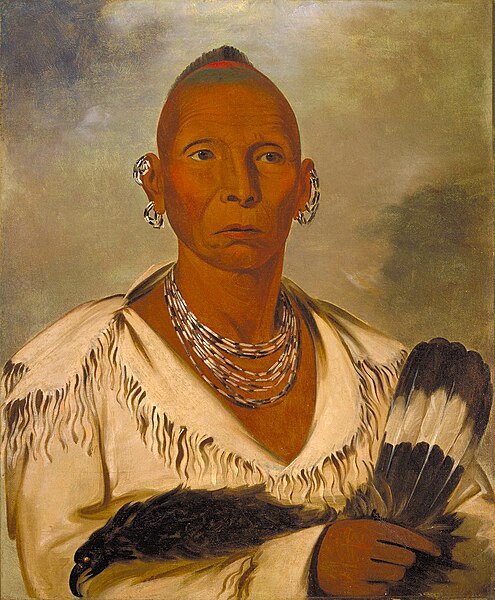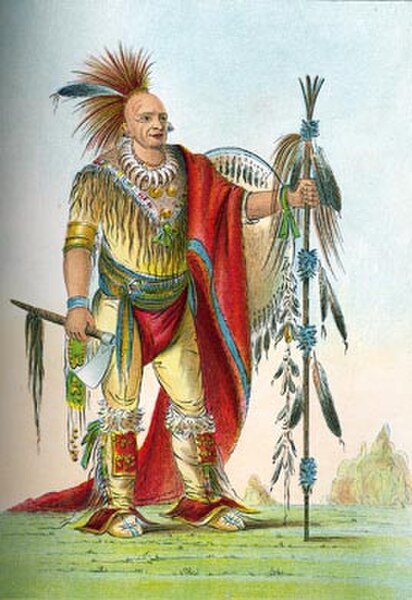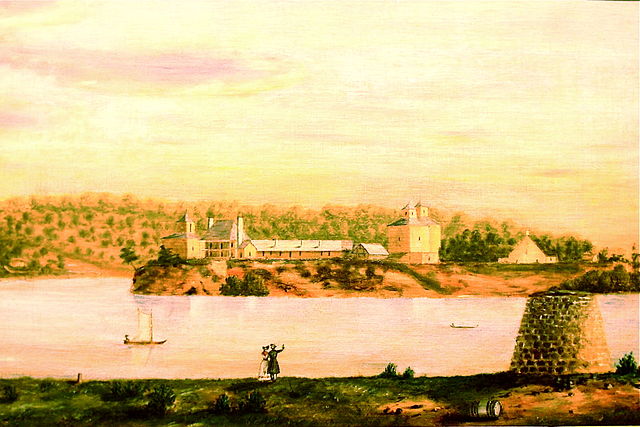The Bad Axe Massacre was a massacre of Sauk (Sac) and Fox Indians by United States Army regulars and militia that occurred on August 1–2, 1832. This final scene of the Black Hawk War took place near present-day Victory, Wisconsin, in the United States. It marked the end of the war between white settlers and militia in Illinois and Michigan Territory, and the Sauk and Fox tribes under warrior Black Hawk.
The American steamboat, Warrior at the Battle of Bad Axe attacking fleeing Sauk and Fox Indians trying to escape across the Mississippi River which resulted in a massacre in the last major engagement of the Black Hawk War
Battle of Bad Axe, engraving by Ernest Heinemann, from original by William de la Montagne Cary
An 1847 illustration of a dead Sauk woman and her surviving child being discovered by a U.S. officer at Bad Axe.
Monument near the site of the Bad Axe massacre
The Black Hawk War was a conflict between the United States and Native Americans led by Black Hawk, a Sauk leader. The war erupted after Black Hawk and a group of Sauks, Meskwakis (Fox), and Kickapoos, known as the "British Band", crossed the Mississippi River, to the U.S. state of Illinois, from Iowa Indian Territory in April 1832. Black Hawk's motives were ambiguous, but he was apparently hoping to reclaim land that was taken over by the United States in the disputed 1804 Treaty of St. Louis.
Black Hawk, the Sauk war chief and namesake of the Black Hawk War in 1832
Keokuk by George Catlin, c. 1830s
Newspaper account of the alarm caused by Sauk returning to Saukenuk, Washington National Intelligencer, June 13, 1831
Fort Armstrong was located on Rock Island, which is now known as Arsenal Island. The view is from the Illinois side, with Iowa in the background.








